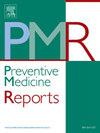血红蛋白、白蛋白、淋巴细胞和血小板评分与糖尿病或糖尿病前期成人全因死亡率和心血管死亡率的关系:NHANES 2005-2018的结果
IF 2.4
3区 医学
Q2 PUBLIC, ENVIRONMENTAL & OCCUPATIONAL HEALTH
引用次数: 0
摘要
目的糖尿病/前驱糖尿病患者血红蛋白、白蛋白、淋巴细胞和血小板(HALP)评分与死亡率的关系尚不清楚。本研究旨在评估该人群中HALP评分与全因死亡率和心血管死亡率之间的线性和非线性关联,并确定潜在的临床相关阈值。方法:我们使用两个相关数据集分析了19350名美国糖尿病/糖尿病前期成年人的数据:国家健康与营养调查(NHANES, 2005-2018)和国家死亡指数(NDI)的死亡率记录,并随访至2019年12月31日。Kaplan-Meier生存曲线、Cox比例风险模型和限制性三次样条(RCS)用于评估HALP评分和死亡率的相关性。结果kaplan - meier分析显示,第一季度全因死亡率最高,第三季度全因死亡率最低,第四季度心血管死亡率最低(p值<;0.0001)。Cox回归分析显示,与第一季度相比,第四季度全因死亡率(HR 0.64, 95% CI 0.58, 0.73)和心血管死亡率(HR 0.58, 95% CI 0.42, 0.82)的风险显著降低。RCS发现HALP评分与死亡率呈l型相关性,拐点为42.29(全因)和39.98(心血管)。结论糖尿病或前驱糖尿病患者的HALP评分与全因死亡率和心血管死亡率呈l型相关。本文章由计算机程序翻译,如有差异,请以英文原文为准。
Association of hemoglobin, albumin, lymphocyte, and platelet score with all-cause and cardiovascular mortality in adults with diabetes or prediabetes: Results from NHANES 2005–2018
Objective
The relationship between the hemoglobin, albumin, lymphocyte, and platelet (HALP) score and mortality in patients with diabetes/prediabetes remains uncertain. This study aimed to evaluate linear and non-linear associations between the HALP score and all-cause and cardiovascular mortality in this population and identify potential clinically relevant thresholds.
Methods
We analyzed data from 19,350 United States adults with diabetes/prediabetes using two linked datasets: the National Health and Nutrition Examination Survey (NHANES, 2005–2018) and mortality records from the National Death Index (NDI), with follow-up through December 31, 2019. Kaplan-Meier survival curves, Cox proportional hazards models, and restricted cubic splines (RCS) were used to evaluate the HALP score and mortality associations.
Results
Kaplan-Meier analysis revealed the highest all-cause mortality in Q1, the lowest all-cause mortality in Q3, and the lowest cardiovascular mortality in Q4 (p-value <0.0001). Cox regression analysis demonstrated significantly reduced risks of all-cause mortality (HR 0.64, 95 % CI 0.58, 0.73) and cardiovascular mortality (HR 0.58, 95 % CI 0.42, 0.82) in Q4 compared to Q1. RCS identified an L-shaped association between the HALP score and mortality, with inflection points at 42.29 (all-cause) and 39.98 (cardiovascular).
Conclusion
An L-shaped association between the HALP score and both all-cause and cardiovascular mortality in participants with diabetes mellitus or prediabetes.
求助全文
通过发布文献求助,成功后即可免费获取论文全文。
去求助
来源期刊

Preventive Medicine Reports
Medicine-Public Health, Environmental and Occupational Health
CiteScore
3.90
自引率
0.00%
发文量
353
 求助内容:
求助内容: 应助结果提醒方式:
应助结果提醒方式:


